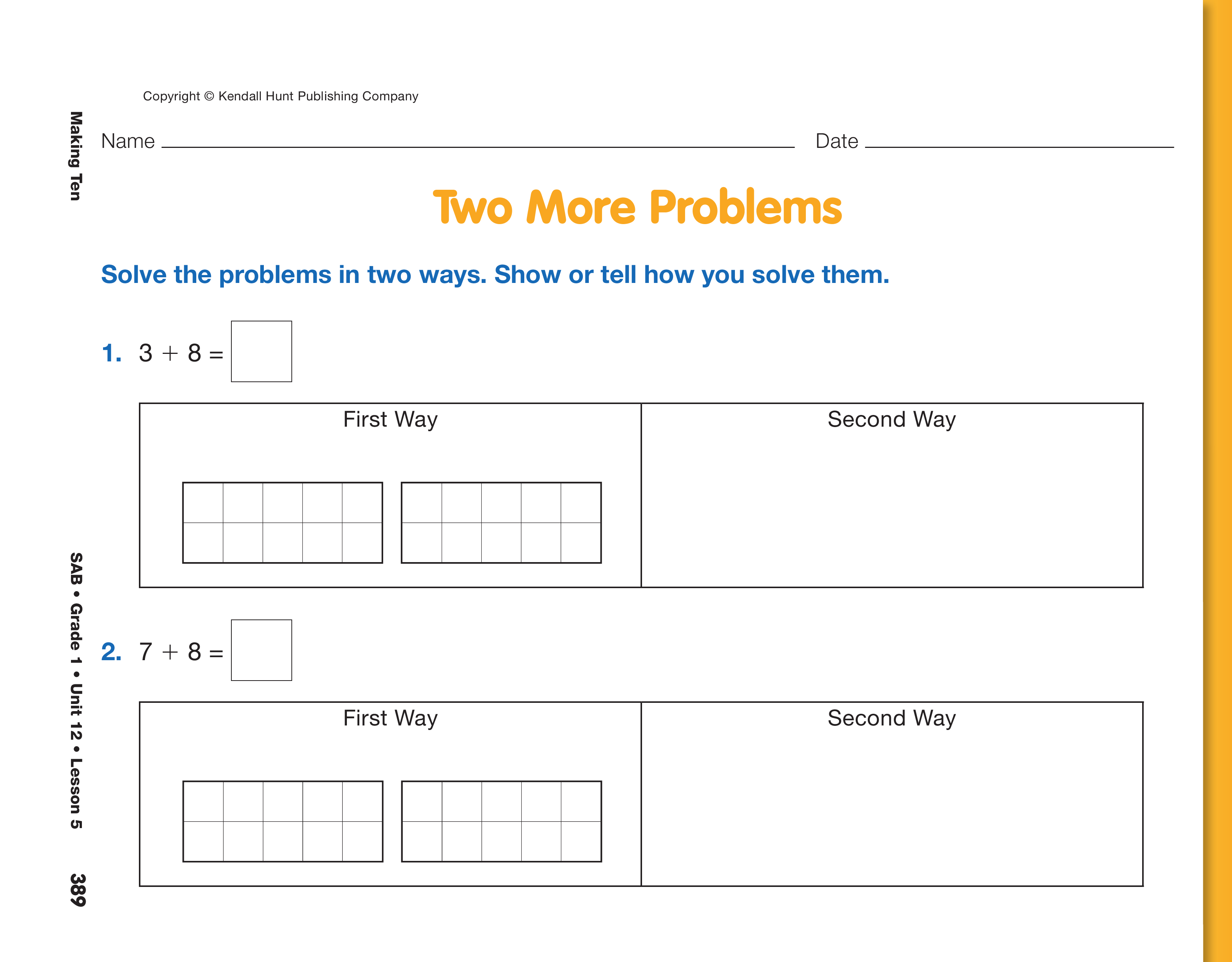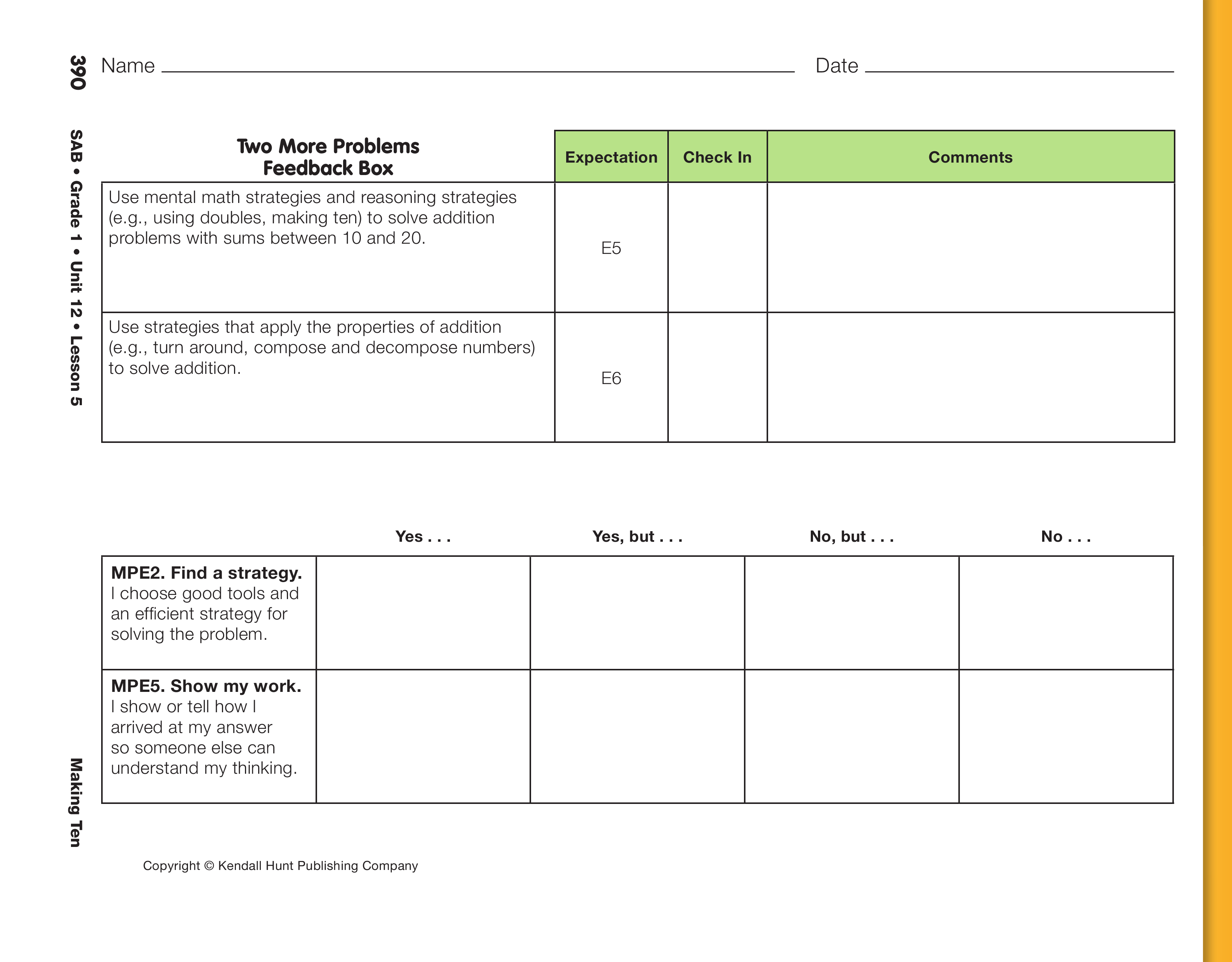Making Ten
Est. Class Sessions: 2–3Summarizing the Lesson
Ask students to solve 6 + 7 in two ways. Tell students that if they use tools such as connecting cubes, number lines, or ten frames to solve the problems, they should be prepared to explain how they used the tool. They may wish to make a quick diagram to remind them of how they used the tool. If students have trouble thinking of a second strategy, ask them to draw a picture or diagram or suggest another tool.
When students have solved the problems, discuss students' thinking. Ask students to show how they solved the problems on the board or chart paper. If students describe a complicated strategy, interpret it for students using symbols or drawings on the board. Write students' names beside their strategies. Ask students to vote for the strategy that they think is easiest to use or most efficient. Compare the strategies that students voted for at the end of the lesson to those they voted for at the beginning of the lesson.
To encourage students to learn new strategies and extend their thinking, ask students to solve similar problems using another student's strategies. The following are some examples:
- Jerome solves 3 + 8 with connecting cubes and counts all and Ana begins at 8 and counts on 3. Ask Jerome to solve 2 + 9 using Ana's method.
- Michael solves 3 + 8 by taking 2 from the 3 to make a ten and then adding the leftover one. Ask Ana to solve 4 + 7 using Michael's method.
- Nila solves 7 + 8 by doubling 8 and subtracting 1. Ask Michael to solve 8 + 9 using Nila's method.
Provide time for students to complete the Two More Problems page in the Student Activity Book, which asks students to solve problems by adding 8 to a single-digit number in two different ways.















